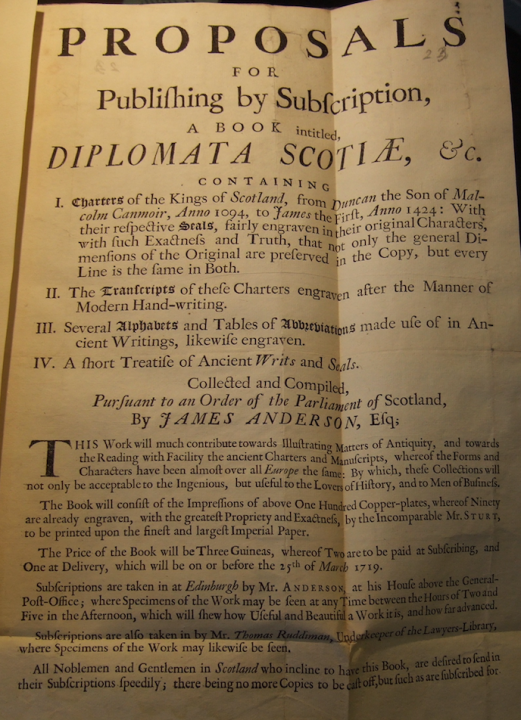Almost a month ago, I talked about planning my summer writing goals and, especially, the book chapter I wanted to write first: a look at the reception of French archival and textual theories in early Enlightenment Scotland. I finished a first draft of that chapter earlier today and thought that now might be a good time – in line with my longer-term intention of documenting the writing process – to say something about how I got from point A to point B.
As with most research and writing innovations, it was The Historian who introduced me to generative writing. The idea is very simple: do your very best to throw away any desire to edit, footnote, tidy, or reflect on your writing as you go and just hammer out the words at breakneck speed. In reality, of course, it’s a little more complicated and there’s quite a lot of literature on the internet about different variations of the method (you can see some of these here, here, and here). Most academic contexts for generative writing seem to be along the lines of a one or two hour group writing session, but when The Historian participated in a “Thesis Boot Camp” for doctoral students at St Andrews in which their goal was to write 20,000 words over three days I decided I’d give it a go as well. To my immense surprise, I finished the long weekend with two draft chapters in hand and ever since I’ve used the technique as a means of getting myself through the initial draft.

That doesn’t just mean starting with a blank page and ending with 10,000 words, though. For this chapter, as for others, I started with a general idea of the topic in hand (in this case, a chapter about the reception of French diplomatic scholarship in Scotland). Then I asked myself some basic questions about the chapter, borrowed ultimately from the writing pedagogy of Dr. Peta Freestone: What are the main points it needs to cover? What resources and/or evidence will I need to draw on to demonstrate these points and convince my reader? And how does this chapter relate to my overall argument? To those basic questions I also added the additional query of “who does this chapter introduce?” One of the pleasures and challenges of writing this book has been in helping my (notional) readers to get to know a host of obscure Scottish thinkers of the early eighteenth century and I’ve been doing my best to make that happen in an orderly and non-confusing fashion. Once I’d answered those questions to my satisfaction, I started working on an outline of the chapter. This went through about three iterations, each more detailed than the last, until earlier this week I had in hand a 1,500 word or so paragraph-by-paragraph outline of what I wanted to say. It was only then that I began to write.
Like quite a lot of other people who take this approach, I try to structure my writing time using the Pomodoro technique. Its effectively a way of making sure you work hard while still pacing yourself, a bit like setting a sustainable rating in a long-distance rowing race. The idea is that you work – focusing your entire mind on the matter at hand – for twenty-five minutes, take a break for five minutes, work for another twenty-five minutes, another five minute break, and so on until you’ve done a full “set” of four pomodoros (pomodori?), four twenty-five minute rounds. When I’ve prepared properly, I can pretty consistently write about 650 words in the course of one pomodoro, so going into a piece of work it’s relatively easy to figure out how much time I need to set aside. In this case, though, I actually over-budgeted on time, anticipating the chapter would take twelve pomodoros when it only came out to nine.
And that’s more or less that. I now have about 9,800 words, making a complete first draft of this chapter. It’s a mess, to be sure – full of place holders, notes saying “[CHECK THIS]”, tags indicating that I need to come back and flesh out a particular point in more detail, almost no footnotes, etc. – but it’s also something to work with, and I find that’s the most important thing. I’ll let it sit for a couple of weeks before I begin revising it and if I manage to keep to schedule by then I’ll have started work on the next chapter. Ever closer to a complete draft . . . .
Copyright © 2017 Kelsey Jackson Williams
Leave a reply to MartinWeisa Cancel reply